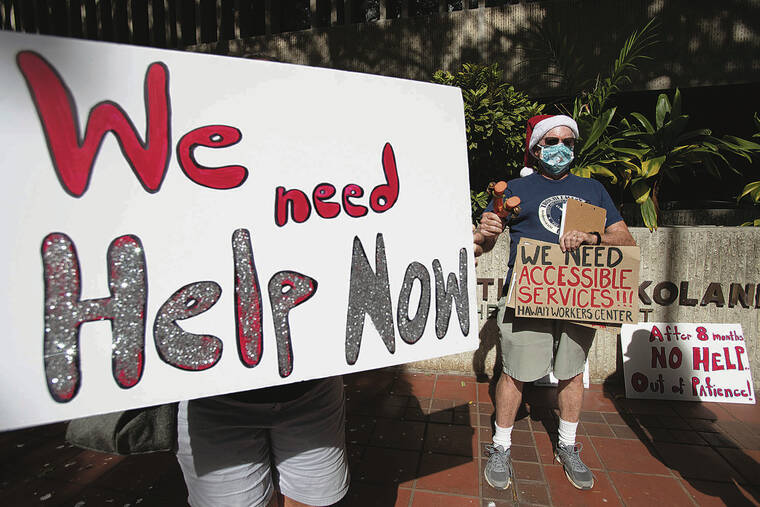Hawaii’s Gov. David Ige has been woefully unresponsive. Hawaii Workers Center members and supporters have written, petitioned and reached out to him at least three times formally requesting to meet with him on critical issues facing workers, especially the unemployed. But he either did not respond or refused our request. This callous neglect of workers’ concerns cannot be overlooked. The Hawaii Legislature’s ongoing failure to support workers, and now the governor’s refusal to even meet to discuss the issues, are unacceptable.
Hawaii’s “Democratic Revolution of 1954” saw the election, for the first time, of a Democratic majority to the territorial legislature, breaking the stranglehold of the Big Five corporate-dominated Republican Party. This “revolution” took place after major strikes by workers on sugar and pineapple plantations and on the docks, dramatically strengthening organized labor’s voice in island politics. This union voice brought about significant legislation on health care, public education, housing, labor rights, collective bargaining, unemployment insurance, worker’s compensation, and health and safety protections.
Yet, despite this legacy, Gov. Ige and the Democratic-dominated Legislature have ignored or opposed the needs and concerns of workers on the following vital issues:
>> Minimum wage. When 2021 state legislators refused to raise the minimum wage incrementally to at least $12 at the last legislative session, Ige said and did nothing, despite his earlier advocacy of a $15 minimum wage. Yet food, fuel costs and rents are soaring, and the average cost of a single-family home now exceeds $1 million.
>> Unemployment. Ige and state legislators rushed to reduce unemployment taxes for employers but refused to mandate the reopening of unemployment offices to help workers rendered jobless by the pandemic. Thousands have been frustrated by the state Labor Department’s faulty phone lines, decrepit computer system, and refusal to provide direct services. The department claims that a spike in COVID-19 cases prevented the Sept. 7 reopening of its offices and falsely asserts that its phone-in appointment system would serve the needs of unemployed claimants. The truth is that only a limited set of issues can be handled by the appointment line; thousands need direct assistance by department staff to resolve issues. There are thousands of claims still backlogged for months in the system.
>> Disregard for teachers. After nixing a $2,100 bonus for Hawaii’s teachers who have served our students well during the pandemic, Ige and the Department of Education are refusing to bargain with the teachers’ union over COVID-19’s impacts on the health and safety of teachers and their students. Ige’s emergency proclamation suspended Chapter 89 of the collective bargaining law, allowing the DOE to refuse to hear teachers’ grievances and concerns. Teachers lost any say to establish necessary and consistent health and safety protocols at schools, endangering families and communities and causing anguish to parents and students when quarantined. The DOE must negotiate with the Hawaii State Teachers Association and stop using COVID-19 as an excuse to trample on teachers’ health, safety and union rights.
>> Forced overtime. State legislators this year failed to even consider any legislation banning forced overtime for overburdened nurses.
>> Hotel workers’ job security and safety. The wLegislature refused to consider a bill to ensure the safe and fair return of hotel workers to their pre-pandemic employment; meanwhile, the Ige administration reopened Hawaii to runaway tourism, with hotels to charging visitors high room rates while minimizing safety precautions and reducing staffing and services at the hotels.
>> Restore public access. With the vaccination rate rising to over 70%, and many venues reopening, it is time public access is allowed at the Capitol and all state offices so information and direct services can be provided.
The governor and Hawaii’s legislators must realize that their first job and highest priority should be to meet the needs of Hawaii’s workers and their families.
The authors are board members of the Hawaii Workers Center, a nonprofit community resource center serving low-wage, unemployed and immigrant workers.

